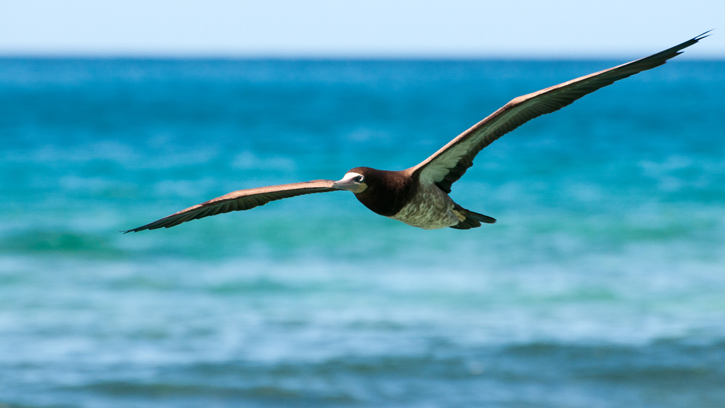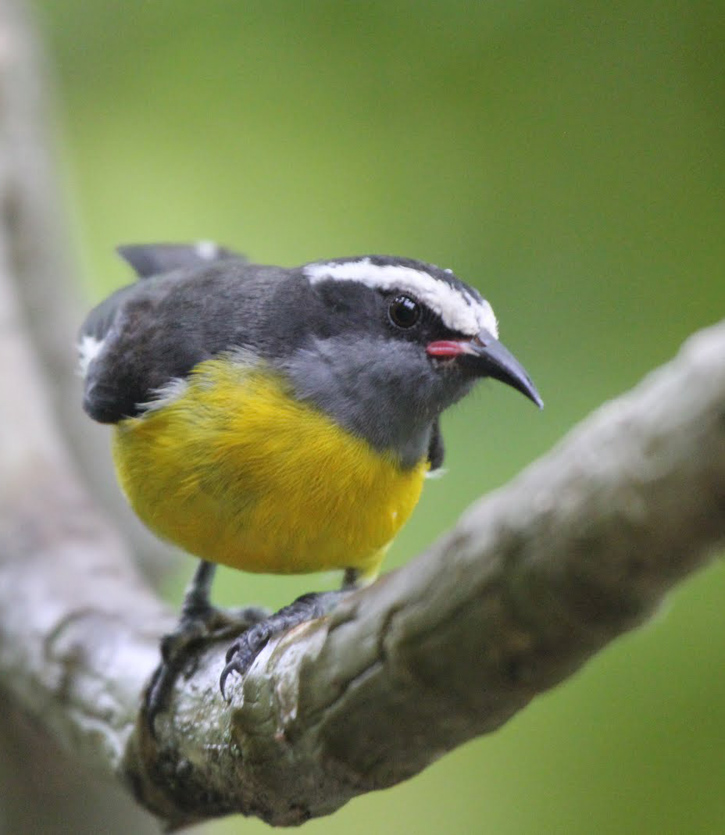Birds are some of the most delightful animals of the Virgin Islands, and birders will be rewarded by the colors, acrobatics, and songs of the island residents.
The mascot of the Charlotte Amalie High School athletics department is the chicken hawk.Near the sea, there is usually no better show than the one put on by pelicans, which glide (look: no wing flapping) far above the ocean surface only to crash down with incredible force, gathering tiny fish and other sea creatures in their pouches. Pelicans have special air chambers on their chest and special film over their eyes to cushion the sea landing.One of the most easily identifiable shorebirds is the magnificent frigate bird, sometimes called a man-o-war. This long-winged black bird with a forked tail and bent wings looks like a holdover from the dinosaur era. Male frigate birds have a strip of bright red skin on their throats, which they blow up like a balloon to attract females during mating season. Frigate birds catch fish at the surface of the sea, but their biggest food source is in the air; they chase other seabirds fiercely until they drop their catch. Then the frigate bird glides down to catch it.

A brown booby in flight, taken at Apple Bay, Tortola, British Virgin islands. Photo © bvi4092, licensed Creative Commons Attribution.
Look out as well for brown boobies, laughing gulls, royal terns, and tropic birds. Boobies, now endangered, got their name from the Spanish word bobo, meaning “dunce.” They are large and excellent divers. Caribbean gulls are smaller than the seagulls many are used to; listen to their song, “ha, ha, ha, ha.” Tropic birds are elegant and beautiful. Look for the long streamers that extend from their tails.
Inland, birds are smaller and much more difficult to watch. Flower gardens tend to attract doctor birds and green-throated caribs. One of the favorite birds of the islands is the bananaquit, a ubiquitous and cheerful creature you will see in flower gardens and the forest. They have a wheezy, squeaky call and build untidy nests of grass and leaves. They often have bright yellow bellies, set off by black around the head.

A bananaquit poses on a branch on St. John, U.S. Virgin Islands. Photo © Jason Crotty, licensed Creative Commons Attribution.
Many open-air restaurants suffer an abundance of Carib grackles, medium-size birds that make sport of eating crumbs, leftovers, and even whole meals from diners’ plates. There are two kinds of doves on the islands: the common ground dove and the zenaida dove, also called turtledove.
The mascot of the Charlotte Amalie High School athletics department is the chicken hawk. These common hawks can be seen soaring high above farms, fields, and woodland. They keep an eye out for favorite food sources: snakes, lizards, frogs, and rats.
Another bird that is easy to see is the cattle egret, a long-legged white heron that follows cattle, sometimes on their backs. These birds are natives of Africa and were first reported in the Caribbean in 1933.
Excerpted from the Sixth Edition of Moon U.S. & British Virgin Islands.